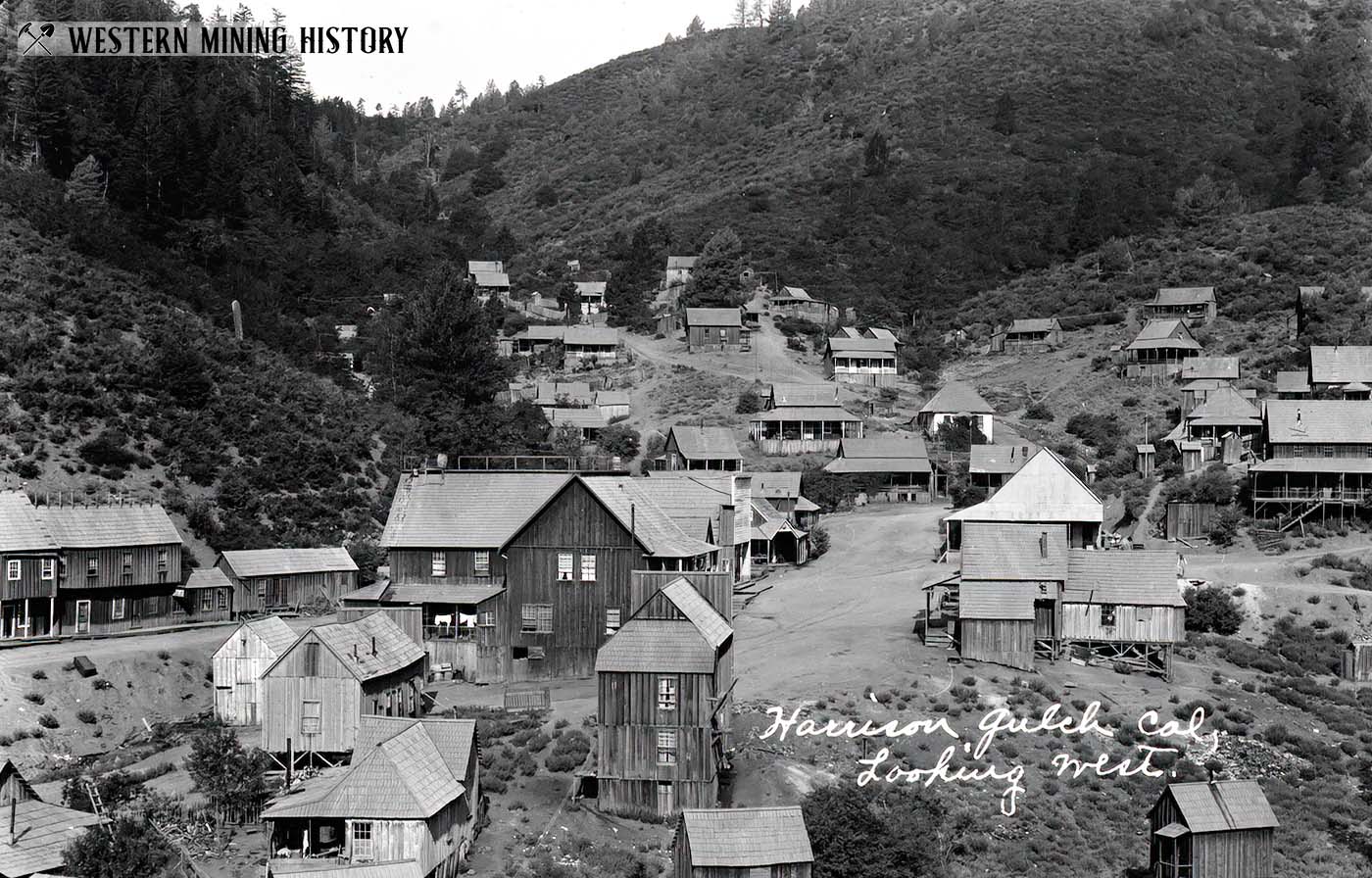Harrison Gulch History
Harrison Gulch (Knob) had a post office from 1896 to 1944.
Harrison Gulch is located in southwestern Shasta County. Although the official name of the town (and the post office) was "Knob", it was referred to almost universally as Harrison Gulch by both residents and newspapers that reported on events here.
Knob was named after a big knob on one of the mountains that surrounded the gulch, while Harrison Gulch was named for Judge W. H. Harrison, who settled here in the early 1850s.
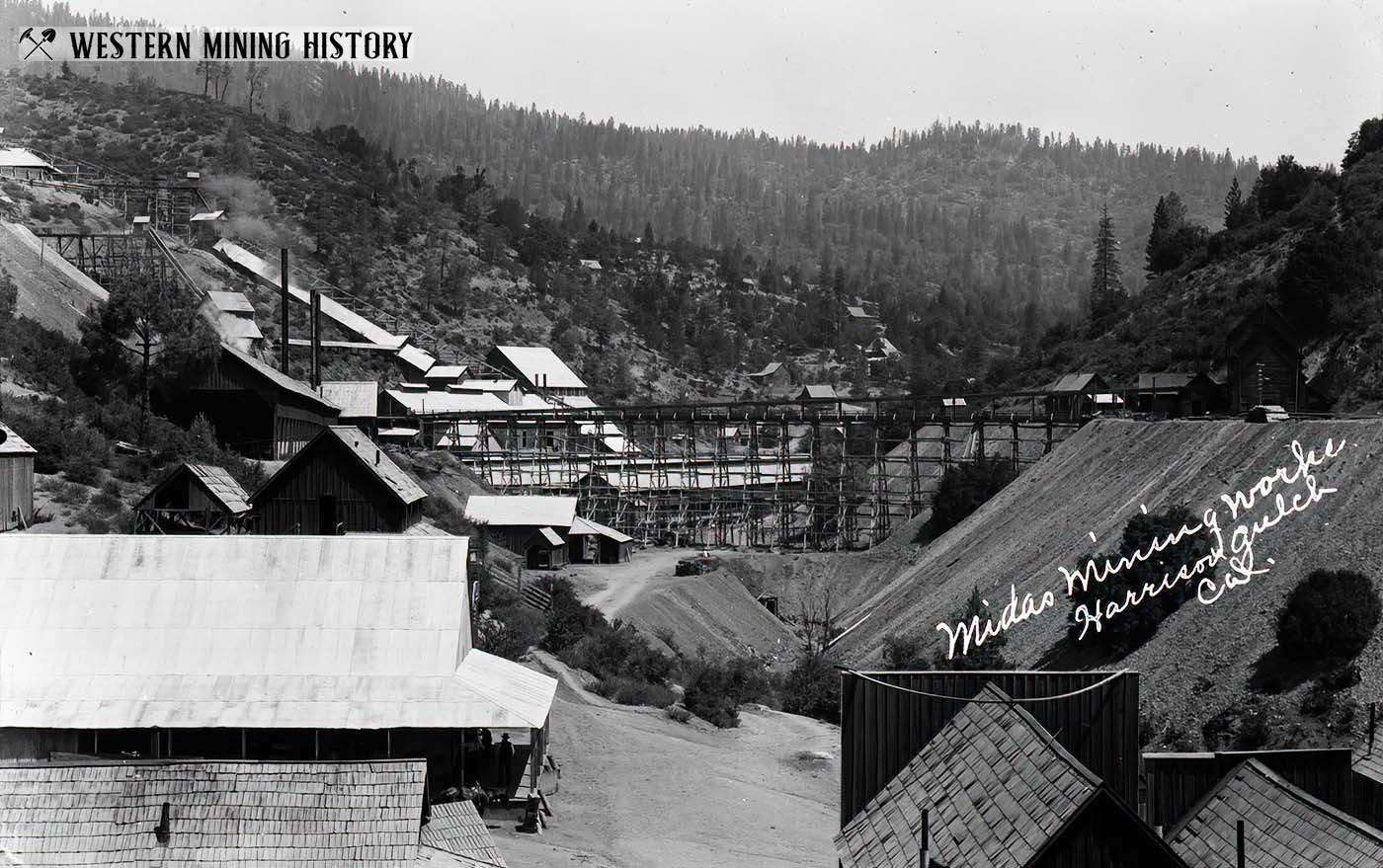
The town was settled near the Midas mine in 1896 as it was brought into production. Discovered in 1894, this mine was the primary source of gold in the gulch and one of the most important lode mines in Northern California. It was worked at large scale from 1896 to 1914, employing hundreds of men during its early years and producing approximately $3,500,000 in gold.
The June 18, 1896 edition of the Record Searchlight described the town: "You would be surprised at the rapid growth of the camp. A large number of buildings have been built including three hotels or boarding houses. The town is surrounded by the tents of the prospectors encamped there."
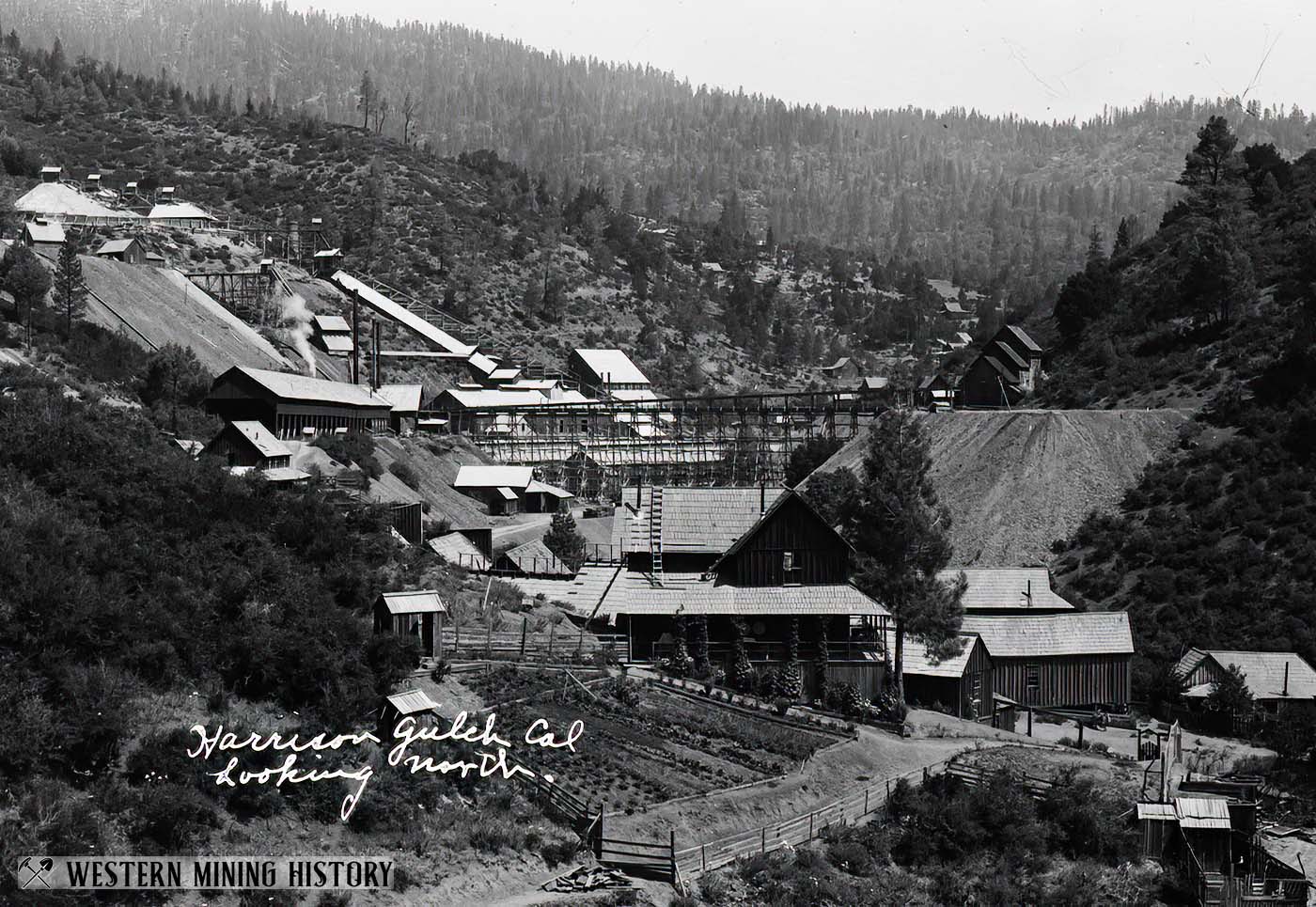
A site user sent an unpublished manuscript from her grandmother that lived in Harrison Gulch as a child in the late 1890s. She states that when they arrived in 1896, the settlement had a school, post office, general merchandise store, and some homes built of mill run and rough hewn lumber, and also many log cabins.
Upon arriving the family purchased a crude log cabin with gold dust her father had panned on their way to the gulch from Oregon. Her description of the cabin is a rare glimpse of life in a frontier mining camp:
There were two rooms and a shed. The kitchen was small with a big fire place and a small table and a bench. The bedroom had two big beds made of pine lumber with big square legs, and just room enough to walk between the beds. Dad sawed the big square legs off of one and pushed it under the other making it a trundle bed. Now there was room enough for two benches along the wall and as there was no door into the kitchen the fire could be seen and be warm. The walls of the cabin were logs, notched so they lay close together and I think they were plastered with clay. The shed was for wood. It got very cold in Harrison Gulch in the winter and had a foot or more of snow so the wood shed was really needed.
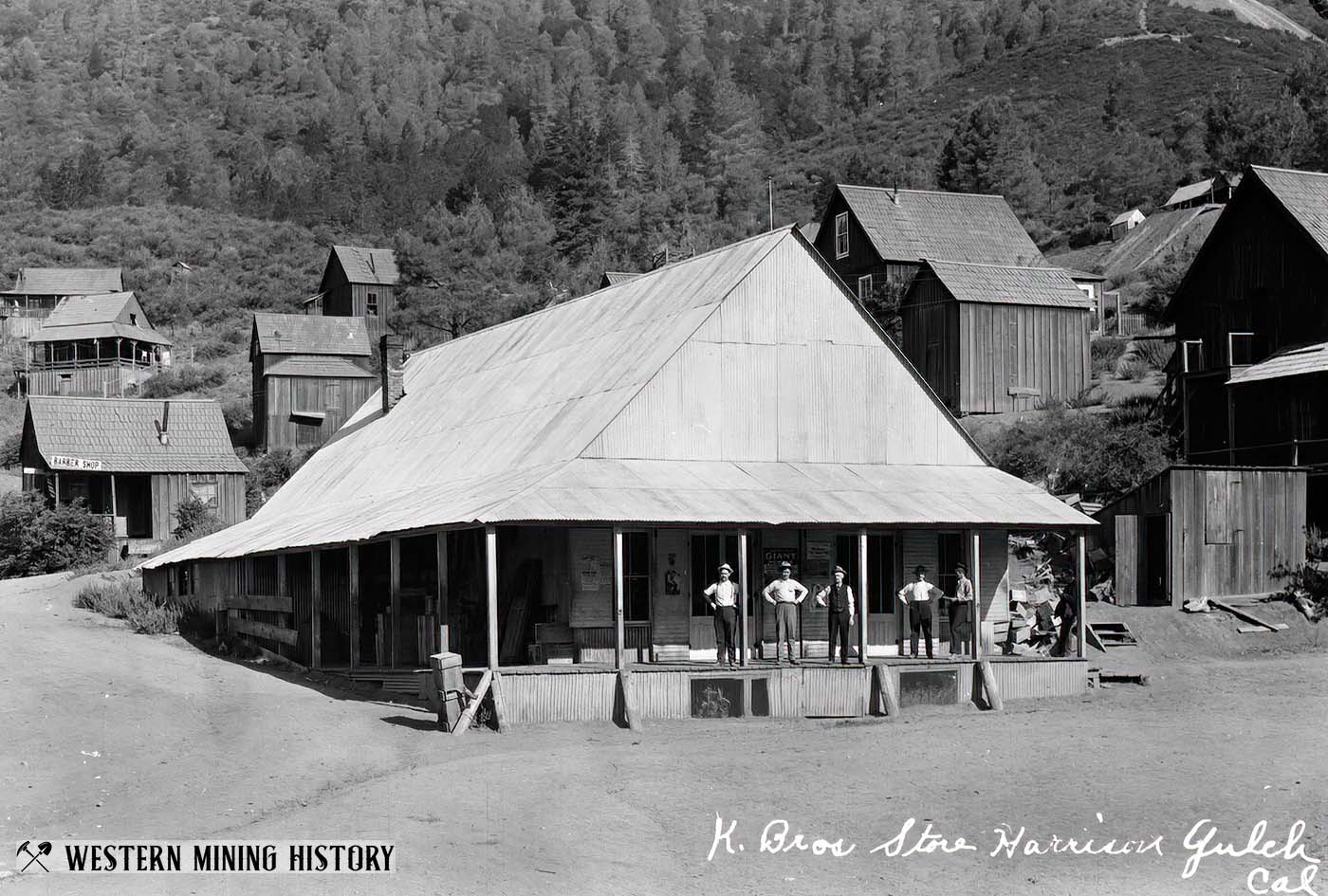
C. F. Goodrich owned many businesses by 1903 which occupied an entire row of buildings in the center of town. Among his business ventures were the Goodrich hotel, a store, a meat market, a stage line, a livery and feed stable, and half interest in the town water works. Also in the town were a blacksmith, four saloons, a drug store, and the Pioneer Hotel.
This was the site of what became known as the "Harrison Gulch townsite war" that pitted the citizens of the town against the Victor Power and Mining company for over a decade. The Victor company owned a mining claim that encompassed much of the town. In 1901, the company filed for a patent on their claim, which would grant them ownership of the land in perpetuity. The town responded by organizing the Harrison Gulch Townsite Company, and the following year they filed their own application for a townsite patent that would void the mining claim patent.
Legal battles ensued for years, but the Victor company got their patent and began aggressively kicking out both business and home owners and then offering them the opportunity to stay if they paid exorbitant rent on the buildings that had only recently belonged to them. A more detailed account of this story is available to members: The Mining Company That Stole a Town.
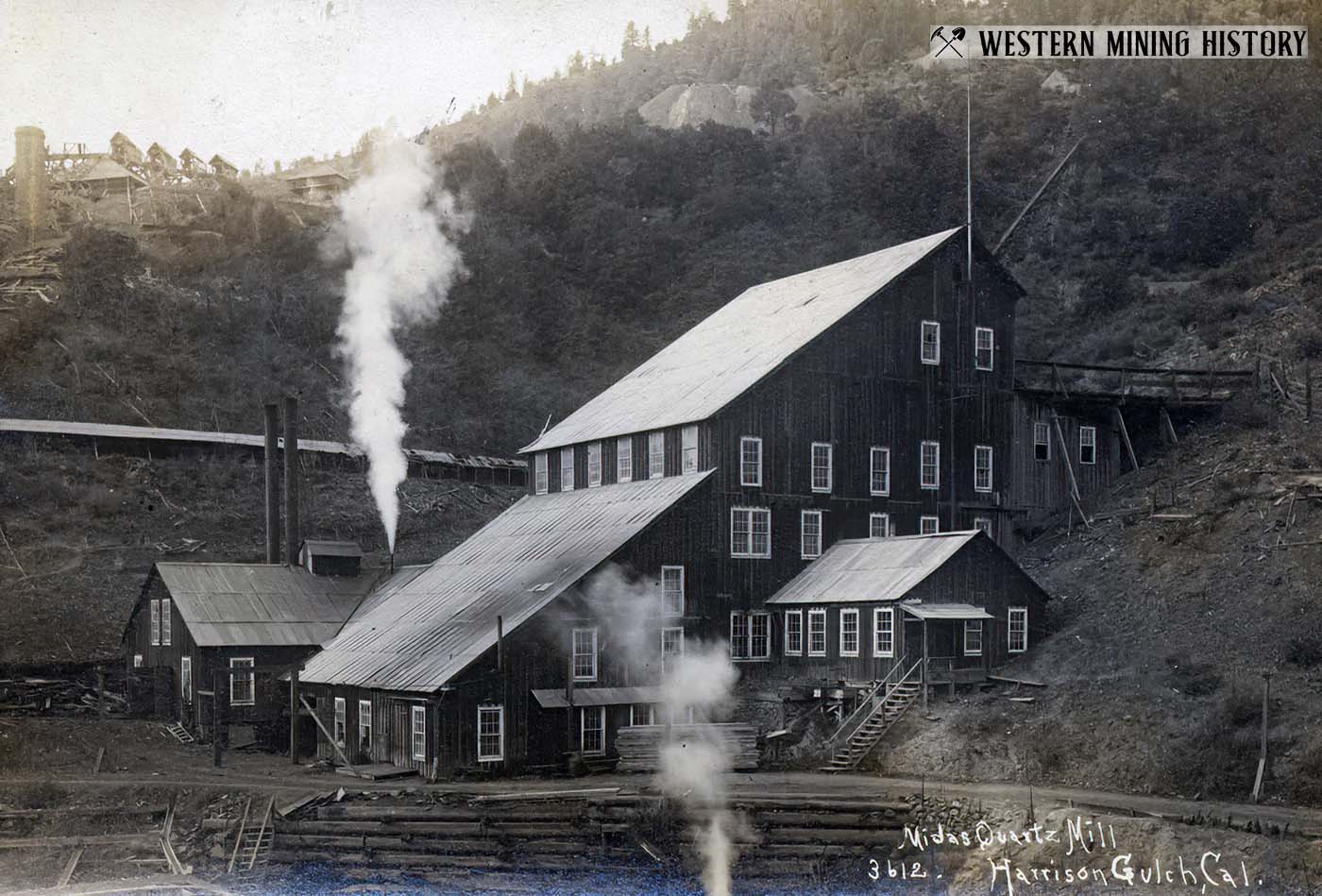
Although hundreds of men worked at the Midas mine in the late 1890s, the operation had been reduced to a workforce of just over 100 men in 1904 when a general strike was declared by the unionized workers. In response, the mine shut down in February, locking out the striking men. By June the workers called off the strike, with no concessions won from the Midas company.
On Sunday, November 6th, 1910, a fire devastated much of the town. The fire started under the floor of Clay Heibner's barber shop (the cause was not known) and spread rapidly through the business district. Water used to fight fires was in use at the Midas mine, and before word be sent to the mine so they could divert the water back to the town, it was too late.
Among the businesses lost in the fire were the Pioneer Hotel, the Goodrich Hotel, and the Packard lodging house. These losses put many of the 150 miners currently at work in the area out of a home just as winter was setting in. Also lost were a butcher shop, the store and post office, the barber shop, and all the saloons in town. After the fire, both the Victor and Midas companies exerted their influence to keep saloons out of Harrison Gulch.
Harrison Gulch Fades
Harrison Gulch was rebuilt after the fire but the town's best years were coming to an end. The Midas mine had a fire underground in 1914 that idled the mine for several months. While the mine was shut down, the Victor Power and Mining company purchased it for around $200,000 (reports on the price vary). The company set to dewatering the mine and built a cyanide plant to process tailings from the Midas mill.
The Victor company also operated the Victor and Gold Hill mines at Harrison Gulch, which are all now referred to as the Midas Group by the USGS. In late 1914 fifty men were employed by the Victor operations. The group of mines closed in 1921 in what was the end of the infamous Victor Power and Mining company's role as mine owner in the gulch.
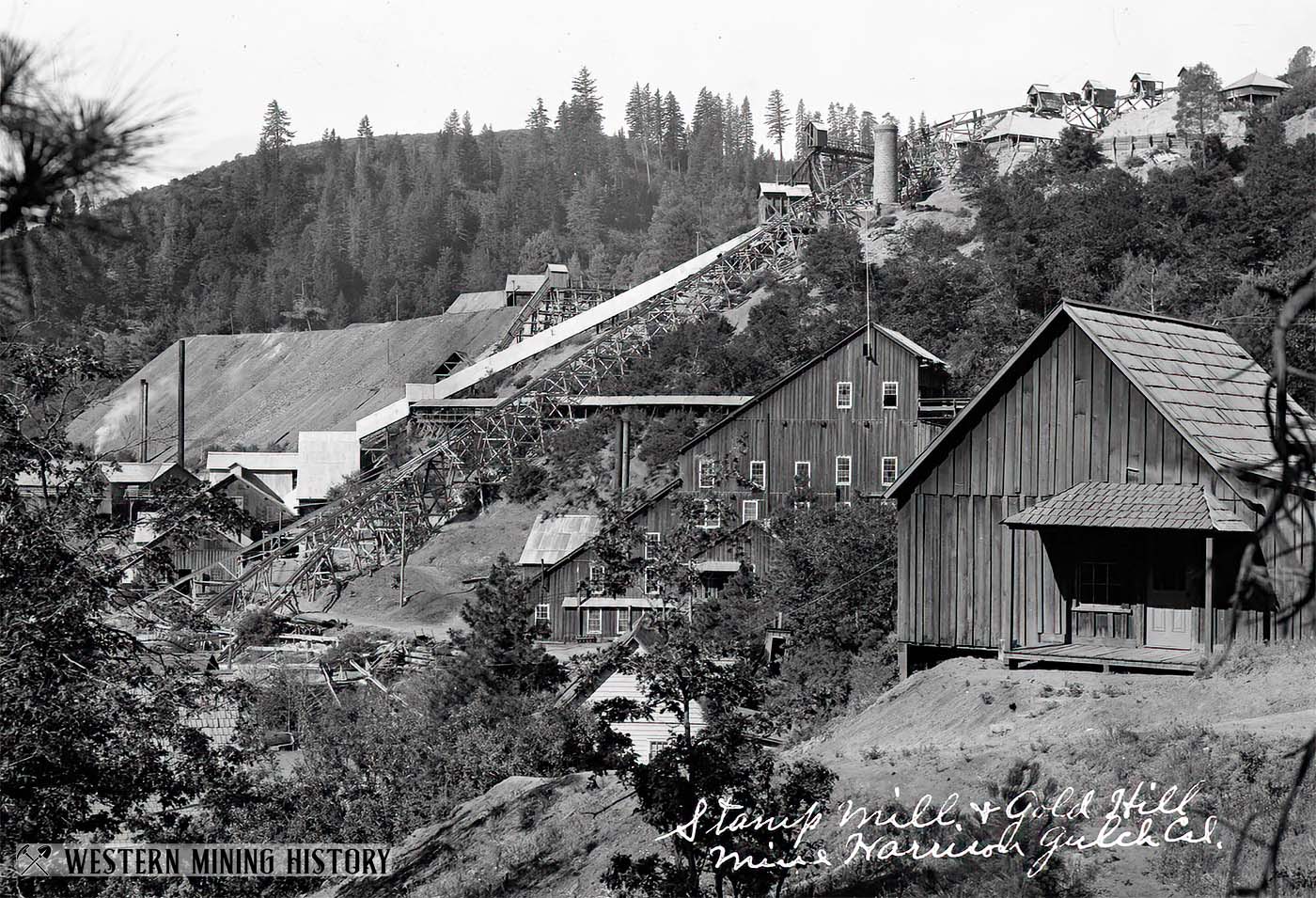
The mines were purchased in 1926 by L. E. Lee of San Francisco for $12,500 in back taxes. Lee then leased the mine to another operator that had plans to work it at small scale but it closed again about two years later. The mine was sold again in 1929 for $2,000 at tax sale, then again in 1931 for $1,000.
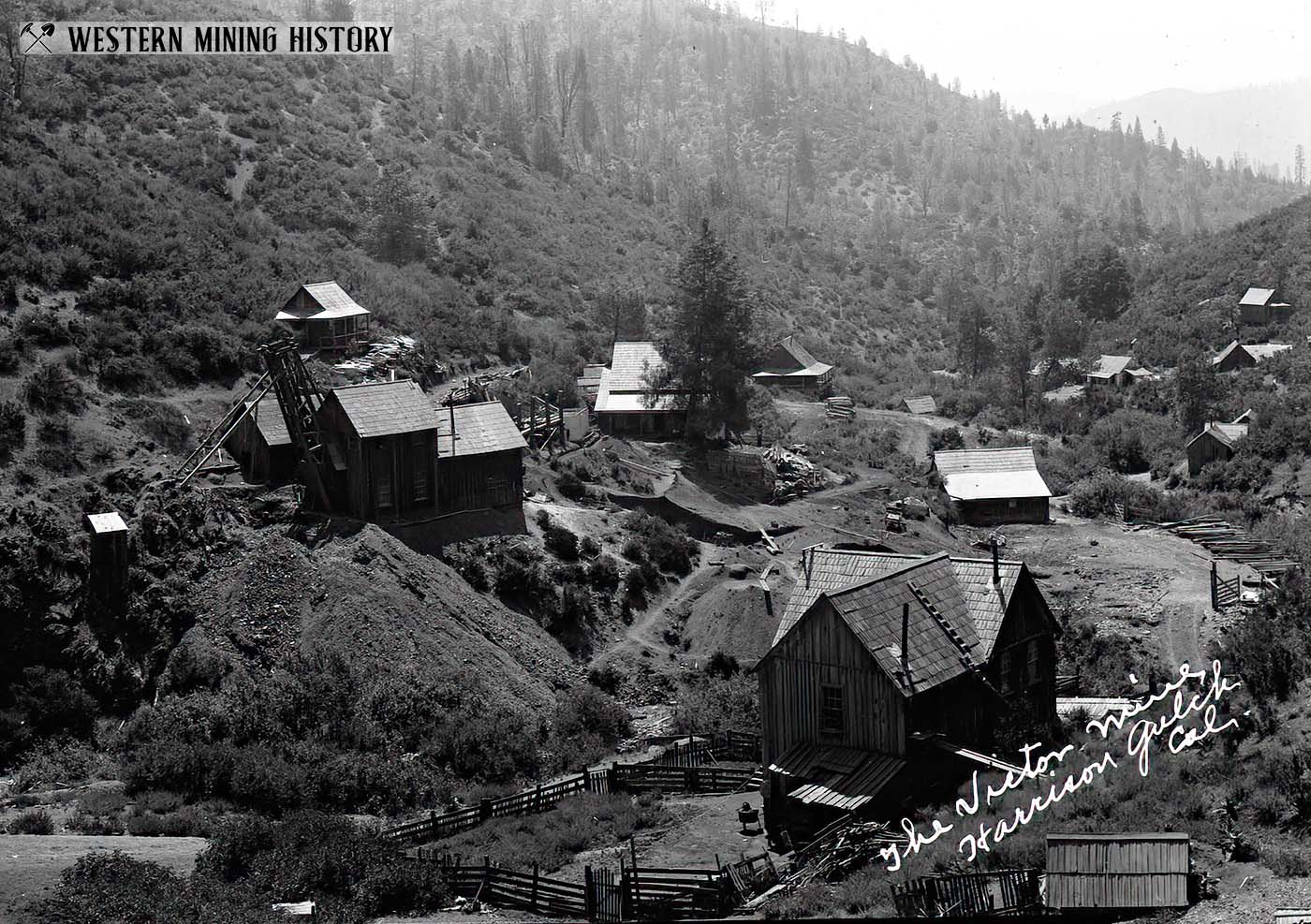
In 1931 just thirteen families resided at Harrison Gulch. sporadic mining kept the town alive for a number of years, but the end of the town seemed inevitable. A Civilian Conservation Corps (CCC) camp was established here in the 1930s. By World War II the town was mostly abandoned and the post office closed in 1944.
It All Started With The Gold Rush
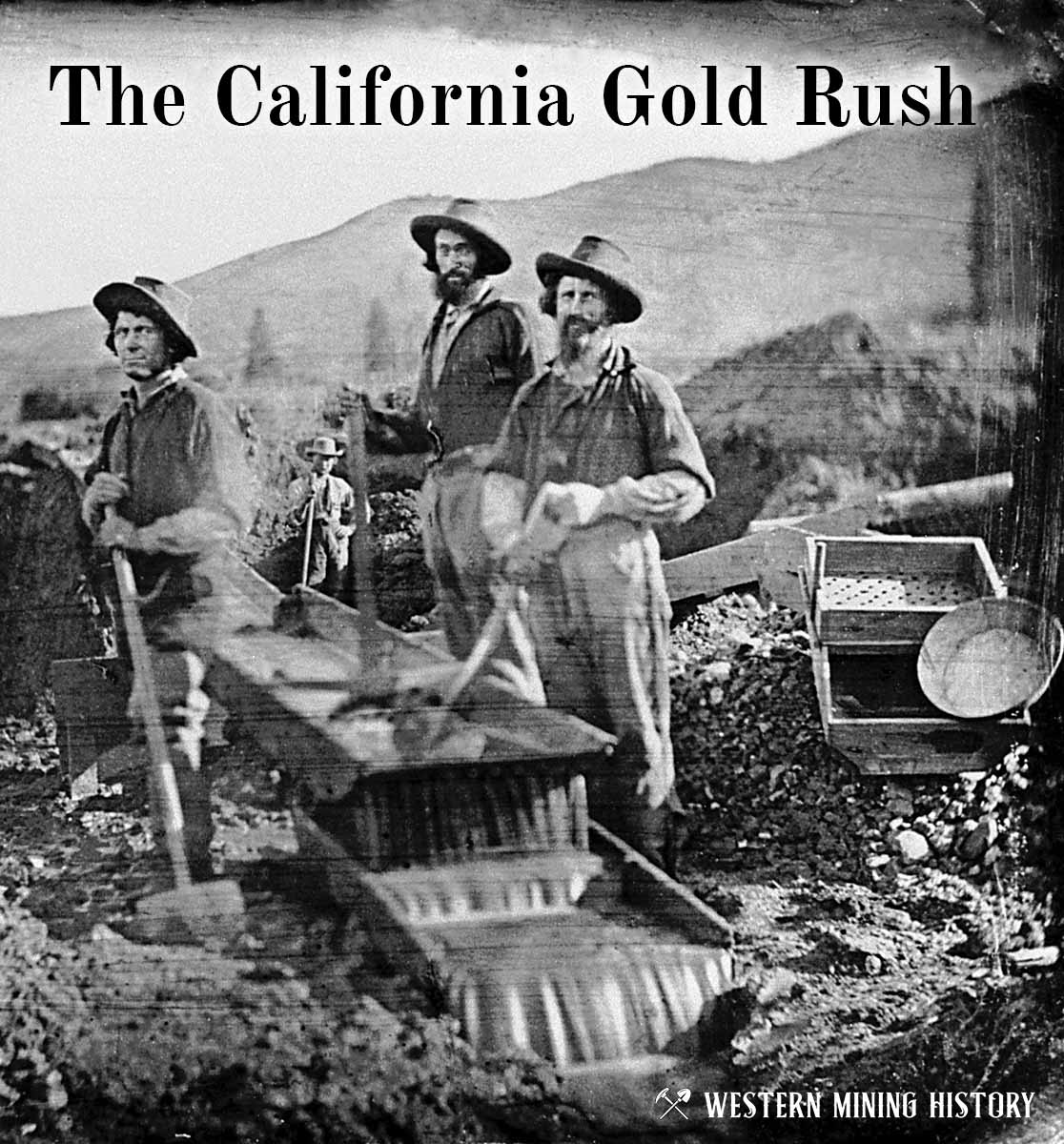
The great California Gold Rush kicked off the entire saga of western mining. Read about it at The California Gold Rush.
California Gold

"Where to Find Gold in California" looks at the density of modern placer mining claims along with historical gold mining locations and mining district descriptions to determine areas of high gold discovery potential in California. Read more: Where to Find Gold in California.
